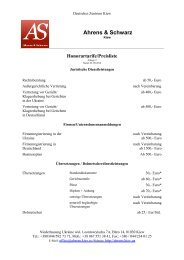ФІЛОЛОГІЯ XXI СТОЛІТТЯ: ТЕОРІЯ, ПРАКТИКА, ПЕРСПЕКТИВИ
ФІЛОЛОГІЯ XXI СТОЛІТТЯ: ТЕОРІЯ, ПРАКТИКА, ПЕРСПЕКТИВИ
ФІЛОЛОГІЯ XXI СТОЛІТТЯ: ТЕОРІЯ, ПРАКТИКА, ПЕРСПЕКТИВИ
Create successful ePaper yourself
Turn your PDF publications into a flip-book with our unique Google optimized e-Paper software.
Голюк С. В.<br />
Національний університет «Львівська політехніка»<br />
CONTRASTIV ANALYSIS OF PHRASEOLOGICAL<br />
UNITS OF THE SEMANTIC FIELD “TO WORK<br />
– NOT TO WORK” IN GERMAN, ENGLISH AND<br />
UKRAINIAN LANGUAGES<br />
Contrastive analysis is the systematic study of a pair of languages<br />
with a view to identifying their structural differences and similarities.<br />
Words may be classified according to the concepts underlying their<br />
meaning. This classification is closely connected with the theory of<br />
semantic field. Semantic field is a closely knit sector of vocabulary<br />
characterized by a common concept. When examining the word it is<br />
seen that its meaning though closely connected with the underlying<br />
concept or concepts is not identical with them. Concept is a category<br />
of human cognition. Concept is the thought of the object that singles<br />
out its essential features. Our concepts abstract and reflect the most<br />
common and typical features of the different objects and phenomena<br />
of the world.<br />
For example in the semantic field of “work” we find nouns (toil,<br />
service, drudgery, slog, trade, occupation, achievement, accomplishment);<br />
verbs (labour, toil, slave, practice, operate, run); adjectives<br />
(working, laboring, busy). The members of the semantic field are<br />
not synonymous but all of them are joined together by some common<br />
semantic component. This semantic component common to<br />
all the members of the field is sometimes described as the common<br />
denominator of meaning, like the concept of kinship, concept of colour,<br />
parts of human body and so on. The basis of grouping in this<br />
case is not linguistic but also extra-linguistic: the words are associated,<br />
because the things they name occur together and are closely<br />
connected in reality.<br />
All members of the field are semantically interdependent as each<br />
member helps to delimit and determine the meaning of its neighbours<br />
and is semantically delimited and determined by them. It follows that<br />
the word meaning is to a great extent determined by the place it occupies<br />
in its semantic field. Phraseologocal units, or idioms, represent<br />
what can probably be described as the most picturesque, colorful and<br />
expressive part of the language’s vocabulary. Phraseology is a kind<br />
29



